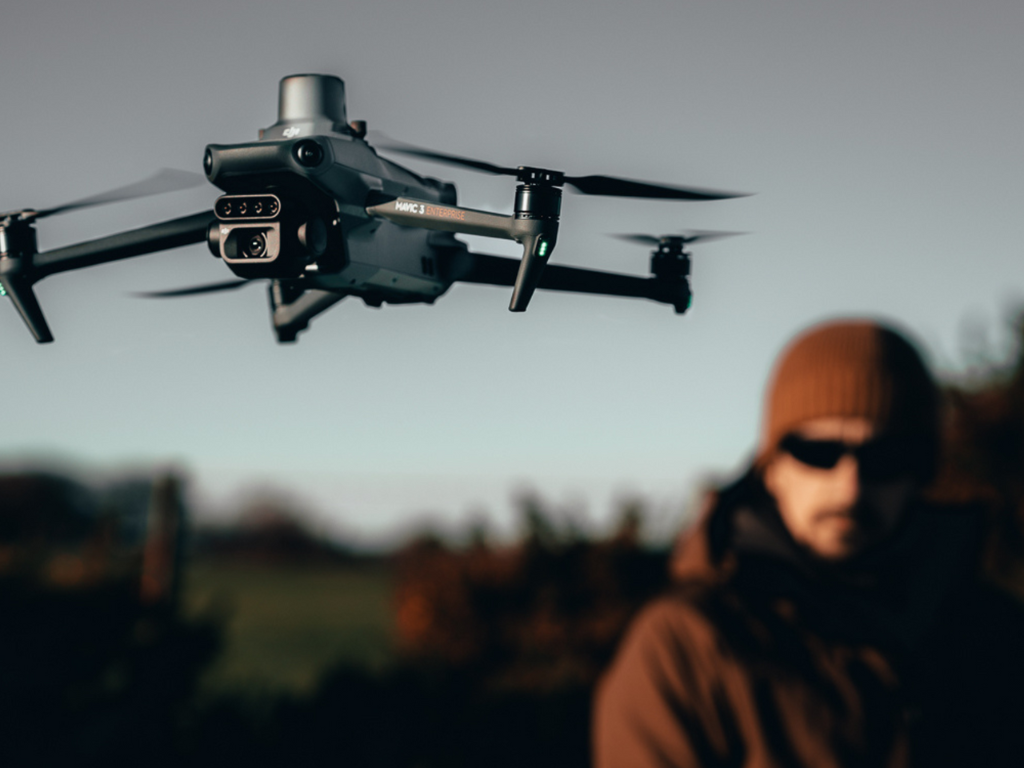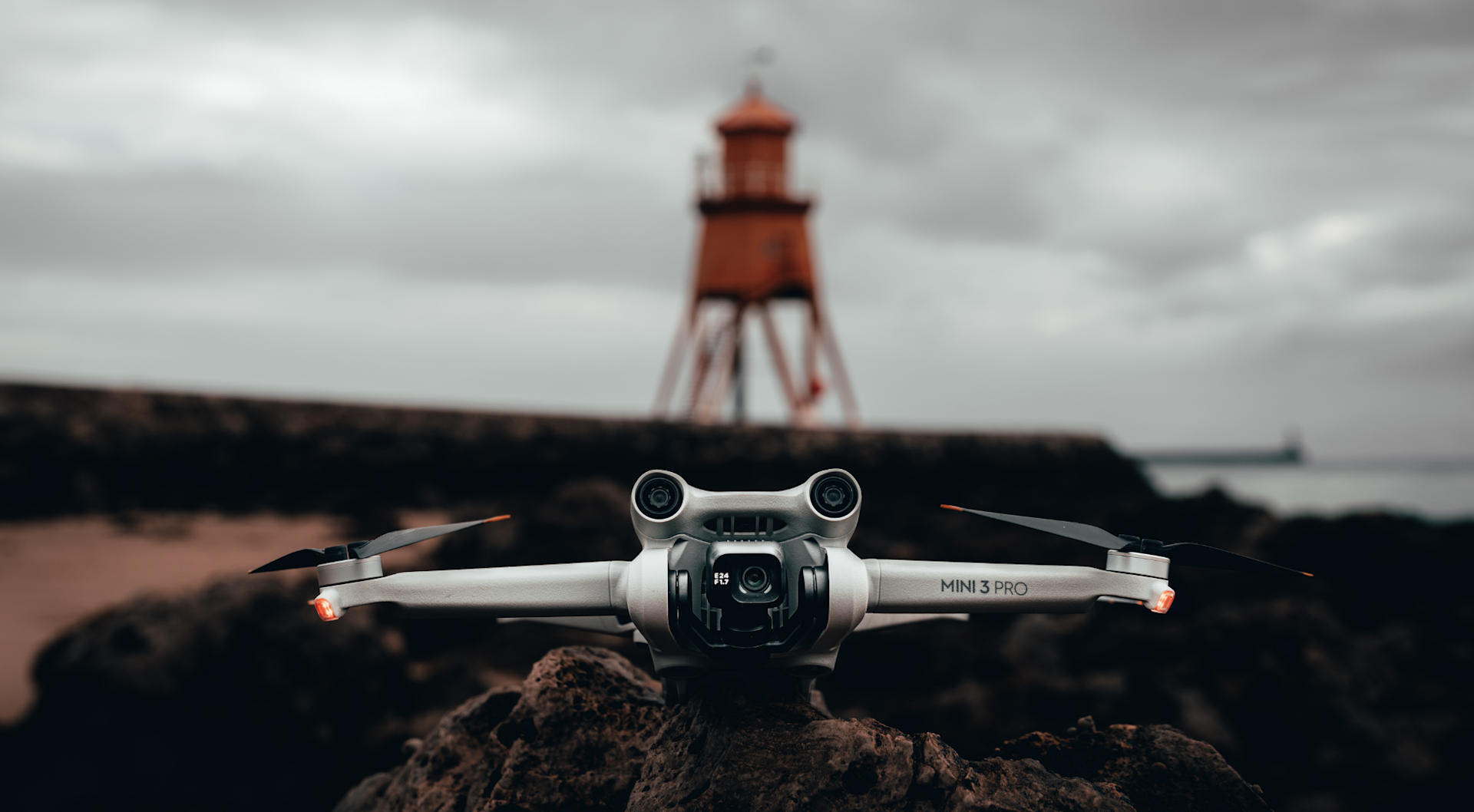
Training & Regulations
CAA Consultation On UK Drone Regulations
Explore key topics in the CAA's consultation include Remote ID, class-marking, and enhanced education for drone operators.
UK CAA releases Review of UAS Regulations consultation;
Document covers a range of topics and proposals, including introducing remote ID, a class-marking system which aligns to international regulations where it is in the UK’s interests, extending the Transitional period, and expanding flyer education requirements;
Consultation primarily applies to the Open Category;
CAA says the proposals would create a world-leading, future-proofed regulatory environment for the UAS sector to grow, delivering transformational benefits to businesses and lives;
Drone community encouraged to have say on proposals. Consultation closes on January 10, 2024.
A new public consultation released by the Civil Aviation Authority (CAA) proposes a raft of changes to UK drone regulation - covering topics such as remote ID, class-marking, and expanding flyer education requirements.
The CAA says that proposals included within the Review of UK UAS Regulations document would create 'a world-leading, future-proofed regulatory environment for the UAS sector to grow'.

The proposed 'targeted changes' primarily relate to the Open Category and are designed to simplify regulations, improve the experience for drone operators, and increase safety and security.
Proposals include:
Simplifying regulation for drone users by simplifying complex operational requirements.
Re-naming operational subcategories in the Open Category.
Replacing ambiguous exclusions for ‘toy’ UAS with more objective criteria.
Expanding flyer education requirements by requiring drone pilots of <250g aircraft to take the online, free Flyer ID test.
Implementing product standards from January 1, 2026, through a system of class-marking, aligning to international regulations where it is in the UK’s interests. The CAA is also proposing to introduce UK-specific product marking for class-marked UAS, ie changing the EU-recognised C marking to UK;
UAS to communicate location and identification data during flight (Remote ID) – i.e. digital number plates for UAS, to 'maintain airspace security'.
Mandate functionality that prevents UAS entering restricted airspace without appropriate permissions (geo-awareness and geofencing).
Extending the Transitional period - due to end at the start of 2026. This would mean drone operators in the Open Category would have until 2028 to adopt class-marked UAS.
Introducing more flexibility in conformity assessment requirements for UAS manufacturers.
The CAA says: 'These proposals build upon retained EU legislation for UAS in several places, including our proposals for operational requirements, geo-fencing, and Remote ID.
'These changes will simplify and strengthen regulations, enabling a world-leading, future-proofed regulatory environment for the UAS sector to grow and to deliver transformational benefits to businesses and lives'.

The consultation runs until 23:59 on January 10, 2024, and responses can be provided here, via Citizen Space. It is based on feedback from the CAA's Call for Input document, published in summer 2023 and receiving 2,629 responses.
Feedback and the final recommendations from the consultation will be published next year.
The proposals constitute the CAA’s current view on possible changes to the relevant regulatory framework. If legislative change is required to deliver these proposals, the CAA will submit its formal opinion to the Department for Transport, which will consider whether to implement the proposed changes in a Statutory Instrument.
Keep reading for a more in-depth look at the CAA's proposals.
Product Safety and Security
The CAA wants to see the introduction of UAS-specific product safety and security regulations in the UK.
Class Marking and Product Standards
Class marking drones in the UK is not yet possible due to a lack of product standards and oversight regime, says the CAA.
As such, no UAS-specific product requirements have been implemented in the UK.
However, class marking for drones (C0-C4) has been introduced across the EU - with the following criteria:
C0: Under 250g
C1: Under 900g
C2: Under 4kg
C3 & C4: Under 25kg
The CAA says that product standards are 'essential to deliver our policy objectives, ensuring that UAS meet a minimum level of safety, security and performance'.
As such, the CAA is proposing to implement class-marking and product standards from January 1, 2026, for UAS intended to be used in the Open Category.
In effect, manufacturers and other economic operators placing UAS on the market for use in the Open Category would need to meet class-marking requirements from this point.

The CAA is proposing to implement class-marking and product standards from January 1, 2026, for UAS intended to be used in the Open Category.
As part of this, the CAA proposes to align to EU regulations for class-marking and product standards, unless there is a safety, security or user benefit that requires divergence.
The CAA says it recognises the benefits of international alignment, but must consider areas where divergence is in the UK’s interests, such as:
Update requirements for tethered UAS to improve product safety and harmonise requirements across tethered UAS. Specifically, we propose to align requirements across C1, C2 and C3 UAS to exempt tethered UAS from command-and-control link protection and link recovery requirements. It is also proposed to require tethered UAS to have Remote ID.
Require C0 and C4 UAS to have a unique serial number, to enable the CAA and other bodies to identify and manage conformity of these UAS.
Remove requirements for C5 and C6 UAS intended for use in the Specific Category, given that these will not be used in future regulation.
To deliver this regulation in practice, the Secretary of State will need to designate technical standards that have been adopted by the British Standards Institute (BSI).
The CAA and BSI will work with the Department for Transport to identify the technical standards that could be used by manufacturers to demonstrate compliance.
Product Labelling and Identification
Because the CAA does not expect to fully align to EU product requirements in all cases, the CAA sys that the EU class identification labels cannot be an enduring solution to physically identify compliant products under UK jurisdiction.
The CAA says that using the same label as the EU would introduce practical challenges for stakeholders to understand whether the product is compliant under the UK or EU jurisdictions, or both.
Therefore, the CAA proposals replacing the EU class identification label with a UK-specific identification label: Replacing the letter 'C' with 'UK', ie UK1 instead of C1.
Simplifying Regulation
The CAA wants to make 'targeted improvements' to operational requirements in the Open Category to make them less confusing.
Operational Requirements
Some of the key proposals include:
A1 subcategory - Overflying Uninvolved People
Currently: All flights in the A1 subcategory cannot take place over groups of uninvolved people, but UAS <250g and C0 UAS can fly over uninvolved individuals. C1 UAS (<900g) must reduce, as much as possible, flights over uninvolved persons.
Proposal: To allow C1 UAS to overfly uninvolved people, whilst maintaining the requirement not to overfly groups of uninvolved people. This would, in effect, harmonise requirements for flying over uninvolved persons in the A1 subcategory for different types of UAS.

A3 Subcategory - C0 & C1 aircraft
Currently: The regulation only explicitly allows C0 and C1 UAS to fly in the A1 subcategory.
Proposal: To explicitly allow C0 and C1 UAS to fly in the A3 subcategory. Whilst this will not impact the actual operational privileges for these UAS, it will clarify that C0 and C1 can be used in these subcategories.
A3 Subcategory - Minimum distance from people
Currently: Flights in the A3 subcategory do not specifically define a minimum distance a UAS must fly from an uninvolved person. However, guidance material (e.g. CAP2012 and AMC/GM) sets out that a minimum distance of 50m should be maintained from uninvolved persons.
Proposal: Introduce a regulatory requirement in the A3 subcategory for UAS to fly a minimum of 50m from uninvolved persons. This aims to avoid confusion for users by aligning regulation with current guidance.

A3 Subcategory - Flights away from residential, commercial, industrial, and recreational areas and buildings
Currently: Fights in the A3 subcategory limit flight distances to residential, commercial, industrial or recreational areas to 150m.
Proposal: Change the regulatory requirement for flights in the A3 subcategory to be at least 150m away from residential, commercial, industrial, and recreational areas and also buildings.
Operational Category Names
The CAA is proposing changing the Open Category's operational subcategory names to be 'more intuitive and meaningful'. It says this will help users understand and recall UAS regulations, resulting in increased compliance.
The proposal is to change the subcategory titles from A1, A2, and A3, to Over, Near and Far.
These revised names aim to reflect the key operational differences between each subcategory – i.e. the distance to uninvolved people.
Operational Exclusions
Currently, some drones - such as toys or UAS <250g - benefit from exclusions from some operational requirements, including registration, remote pilot competency and safety requirements.

The CAA is proposing to remove the exclusions from registration and remote pilot competency requirements for ‘toy’ UAS operations – instead, relying wholly on weight and/or class-mark to determine the scope of requirements.
This change would result in operators of UAS <250g with cameras needing an Operator ID, irrespective of whether it is a ‘toy’ or not.
As is the case today, operators of UAS <250g without cameras would not require an Operator ID.
Increasing Education and Understanding
The CAA says that more can be done to help drone users understand how regulation applies to them. In turn, 'this should result in increased compliance and reduced safety and security risks from UAS'.
Flyer ID
Currently, remote pilots of UAS less than 250g are exempt from some operational requirements, including the Flyer ID test.
The CAA is proposing to extend the requirement for a remote pilot to take the Flyer ID test for UAS operations in the Open Category to include when flying a UAS less than 250g - whether it has a camera or not.

As mentioned previously, the CAA is proposing to remove exclusions for ‘toy’ UAS from these requirements.
However, the CAA does say that it recognises that miniature UAS (e.g. <100g) without cameras pose negligible safety and security risks, and previously would have been considered 'toys' in most cases.
The CAA welcomes views on whether it should introduce a minimum weight threshold, in the region of 50g to 100g, to exclude miniature UAS from these requirements.
Product Guidance
The CAA is proposing that C0, C1, C2 and C3 UAS display important regulatory information, via a digital information notice, on the user interface orcontroller app during the product set-up.
The CAA says this digital information notice could include key messages on:
Registration processes
Safety mitigations
Flyer competency requirements
Airspace restrictions
Data privacy.
The CAA would expect to prescribe the guidance text to UAS manufacturers, with a supporting requirement for UAS to present the information in a user-friendly and accessible way.

To prevent imposing a 'disproportionate burden' on manufactures that do not have the capability to provide digital information notices, the CAA says that manufacturers could continue to provide user guidance as a physical information notice, included in the box.
As part of the plan, the CAA is considering how to futureproof this proposal, including whether to require manufacturers to keep the digital information notice up-to-date, or to issue information to flyers at the request of the CAA.
Policy and Guidance Documentation
Responding to calls to simplify the policy and guidance document structure, the CAA is proposing to phase out the CAP 722 series over time.
Relevant information from the CAP 722 series would be absorbed into the Acceptable Means of Compliance (AMC) and Guidance Material (GM) and a new digital guidance material would be created.
The purpose of this new guidance will be to provide information using non-technical language, that is easy to understand and navigate, says the CAA.
Safe and Secure Airspace
The CAA is proposing the implementation of Remote ID, geo-awareness, and geo-fencing 'to prevent safety and security risks from materialising and to enable appropriate action to be taken when UAS are used maliciously'.

Remote ID
Remote ID is the ability of a UAS to communicate identification and location information during flight. The requirement for Remote ID already exists in UK Regulation (EU) 2019/945 and 2019/947 but is yet to be implemented.
The CAA describes it as a proportionate intervention to provide safety benefits, and says that the CAA, Home Office, Department for Transport and Police maintain the view that the security benefits of Remote ID will be important in preventing unlawful UAS operations and enabling UAS regulations to be enforced.
According to the CAA, this would be implemented through product and operational requirements, including:
Approach | Proposal |
Technical Approach | Remote ID requires UAS to transmit the operator’s registration number, serial number, position, altitude, route, speed and position of the pilot or take-off point. This data could be readable through a mobile phone near to the UAS (e.g. via Wi-Fi/Bluetooth, referred to as ‘direct’ Remote ID). Data could also be passed to a database over a network (referred to as ‘network’ Remote ID), providing real-time and historical visibility. The CAA's view is that Hybrid Remote ID (i.e. network and direct) offers the optimal solution for the UK. C0 UAS without cameras and C4 UAS would not be in scope of product requirements. |
UAS in Scope | Remote ID is proposed to be mandated for all UAS with a maximum take-off mass of 250g or more, or under 250g with a camera, in both the Open and Specific category. |
On-device Enforcement | Implement technical mitigations that ensure Remote ID is active before a UAS takes flight. This includes defining Remote ID zones, where the UAS would require active Network Remote ID to fly in certain geographic areas. In other areas, where security risks are lower and mobile connectivity may be poor, operations would be allowed with Direct Remote ID enabled, provided that the UAS must first attempt to enable Network Remote ID. |
Legacy Aircraft | Legacy UAS to be operated with active Remote ID from 1st January 2028 onwards (excluding UAS <250g without cameras). This requirement could be met through either remotely upgrading a UAS with inactive Remote ID capabilities, or through users attaching a compliant Remote ID add-on module to their device. |
Geo-awareness and Geo-fencing
Currently in the UK, geo-awareness functionality is part of retained product regulations in UK Regulation (EU) 2019/947, due to be implemented as part of class-marking requirements from January 1, 2026.
Geo-fencing is only optional, although drone pilots are subject to operational requirements to not fly in restricted airspace without the required permission.
Geo-awareness: Alerts remote pilots when a UAS is approaching restricted airspace.
Geo-fencing: Provides a stronger mitigation, by preventing the UAS from entering restricted airspace at all.
Key proposals to implement geo-awareness and geo-fencing for UAS include:
Relates to C1-C3 UAS and C0 UAS with cameras. UAS used in the Specific Category may be subject to similar or other adequate mitigations if required as part of the Operational Authorisation. Requirements not expected to apply to Model Aircraft (including C4 UAS), privately built UAS or C0 UAS without cameras.
A requirement on UAS operators and remote pilots in the Open Category to have an active geofencing function during UAS operations of C1-C3 UAS and C0 UAS with cameras, in addition to existing regulatory requirements for geo-awareness to be used.
Not proposed to apply this requirement to legacy UAS operations, given the challenges in applying this retrospectively.
Flashing Light
The CAA wants to make it compulsory for drones to have an active flashing light on their drones during night operations. This would apply to all UAS, irrespective of weight or class.
Drones manufactured without flashing lights would need to use an add-on flashing light to operate in the dark.
Supporting the UAS Sector
The CAA has put forward a series of proposals to support the UAS sector.
Extending The Transitional Period
The CAA is proposing to extend the transitional period by two years for UAS users to adopt class-marked drones, following the introduction of class-marking requirements on manufacturers.
Currently, until January 1, 2026:
Legacy UAS weighing less than 500g can be operated in the A1 subcategory (over people) if the pilot has an A2 Certificate of Competency.
Legacy UAS weighing less than 2kg can be operated in the A2 subcategory a minimum horizontal distance of 50m from people, if the pilot has an A2 Certificate of Competency.
Legacy UAS weighing less than 25kg can be operated in the A3 subcategory (far from people), if the pilot has a Flyer ID.
Also, drones weighing less than 250g can be used in the A1 subcategory indefinitely, and UAS weighing less than 25kg can be used in A3subcategory indefinitely.
A legacy drone refers to an existing drone which is already on the market, but does not feature the CAA-approved certification/class markings.

The CAA is proposing to extend the transitional arrangements to two years after the introduction of class-marking requirements on UAS manufacturers – January 1, 2028.
The CAA is also proposing to to continue to allow the use of legacy UAS, provided that the UAS is flown with active Remote ID from January 1, 2028, onwards (excluding UAS <250g without cameras).
The proposals are summarised in the two tables below.
Note that in the tables:
a = Requires A2 CofC.
b = Requires A2 CofC. UAS must be minimum horizontal distance of 50m from people.
c = UAS with cameras must be operated with active Remote ID.
d = UAS must be operated with active Remote ID.
**Up to December 31, 2027
**
Legacy UAS Maximum Take-off Mass | A1 (Over) | A2 (Near) | A3 (Far) |
249g or less | ✓ | ✓ (b) | ✓ |
250g-499g | ✓ (a) | ✓ (b) | ✓ |
500g-1.99kg | x | ✓ (b) | ✓ |
2kg-24.99kg | x | x | ✓ |
**From January 1, 2028 onwards
**
Legacy UAS Maximum Take-off Mass | A1 (Over) | A2 (Near) | A3 (Far) |
249g or less | ✓ (c) | x | ✓ (c) |
250g-499g | x | x | ✓ (d) |
500g-1.99kg | x | x | ✓ (d) |
2kg-24.99kg | x | x | ✓ (d) |
Conformity Assessment
The CAA is considering options to introduce more flexibility into conformity assessment requirements for class-marked UAS.
These include:
Allowing C1 to C3 UAS to meet conformity assessment requirements using internal production control, for a temporary period – subject to the UAS undergoing type examination or full quality assurance in the future.
Allowing C1 to C3 UAS to meet conformity assessment requirements using internal production control, for requirements that have undergone type examination by conformity assessment bodies under other jurisdictions.
The CAA welcomes feedback from UAS manufacturers and Conformity Assessment Bodies on how it could improve the implementation of conformity assessment for class-marked UAS.
Summary
The Review of UK UAS Regulations consultation document proposes some fundamental changes.
There is sure to be a range of views on these proposals, so the drone community to encouraged to submit feedback to help shape the future of UAS operations.
Click here to read the consultation document in full and comment on the proposals.
